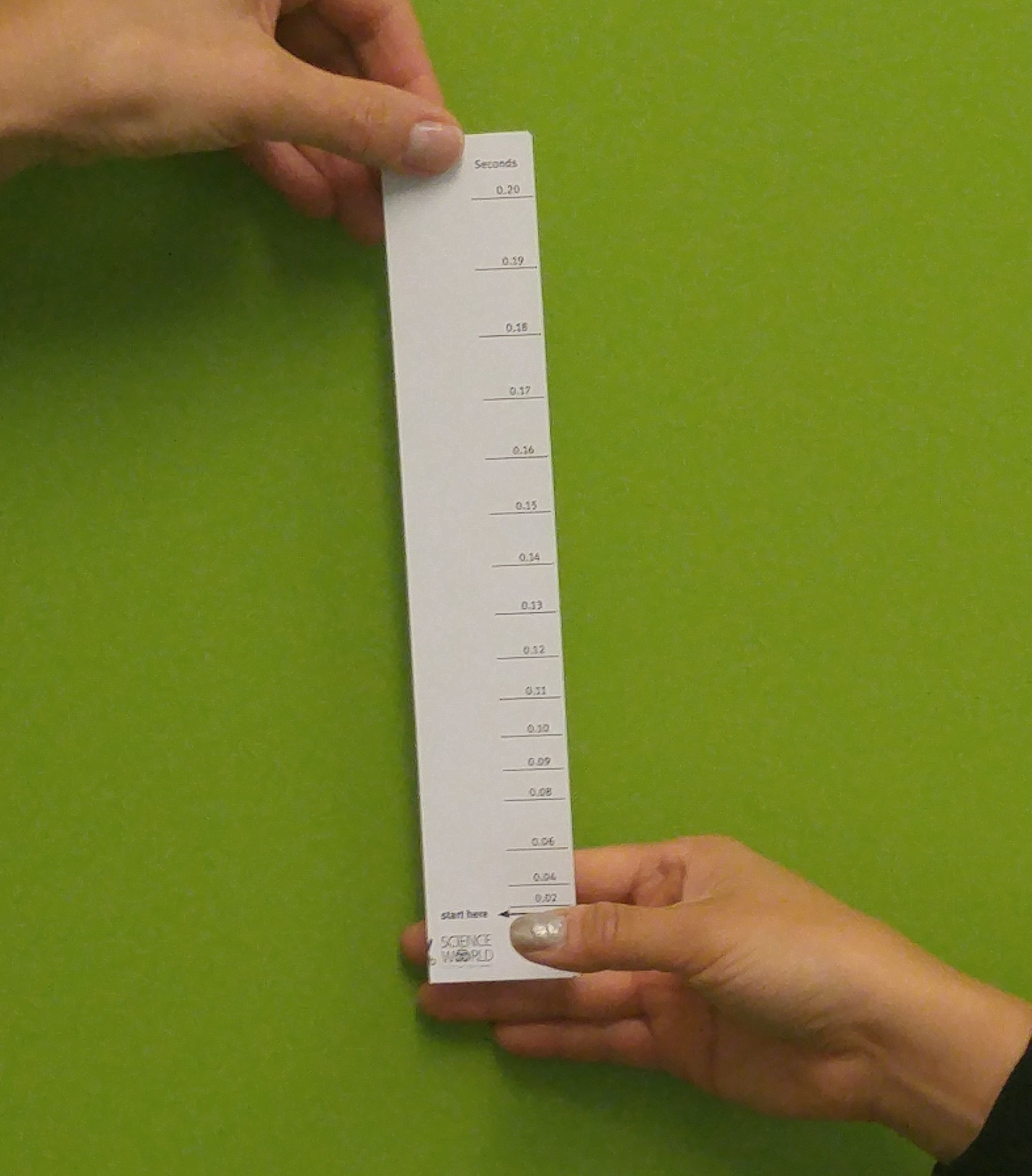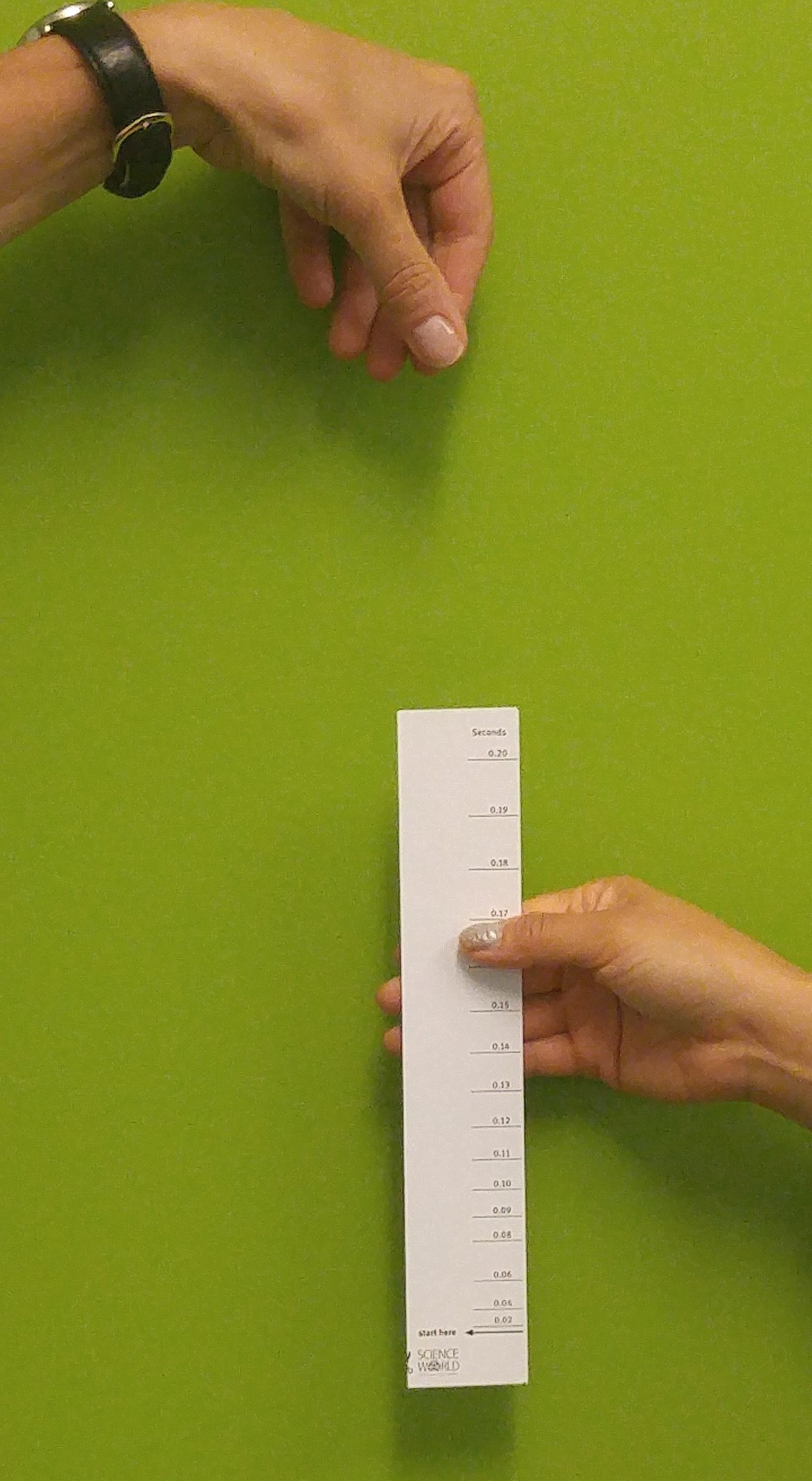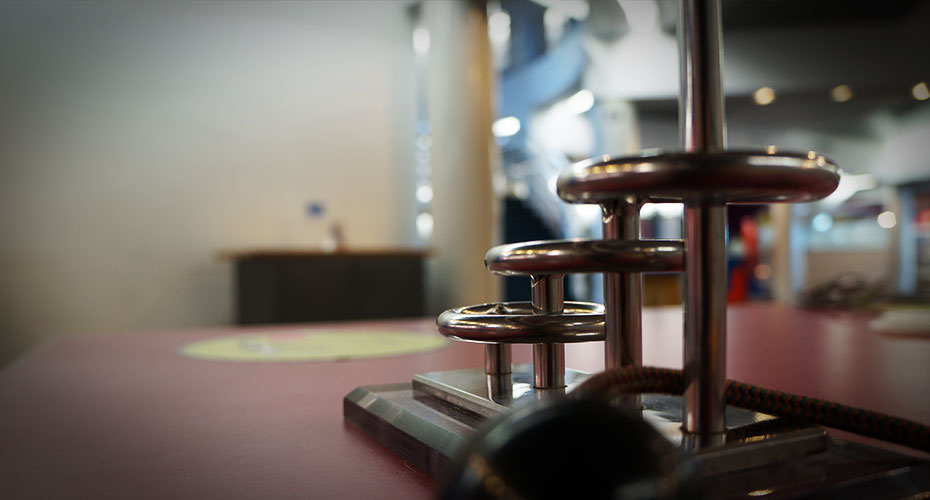How fast can you react?
In this activity, the students participate in a simple ruler drop experiment and learn about the body’s response behind it.
When your friend drops the timer in the experiment, you see it start to move. A nerve signal travels from your eye to your brain then to your finger muscles. Your finger muscles move to catch the timer. The whole process takes between 150 and 220 milliseconds.
The neural pathway involved in a reaction time experiment involves a series of neural processes. This experiment does not test a simple reflex. Rather, this activity is designed to measure the response time to something that you see.
Catching a dropped ruler begins with the eye watching the ruler in anticipation of it falling. After the ruler is dropped, the eye sends a message to the visual cortex, which perceives that the ruler has fallen. The visual cortex sends a message to the motor cortex to initiate catching the ruler. The motor cortex sends a message to the spinal cord, which then sends a message to the muscle in the hand/fingers. The final process is the contraction of the muscles as the hand grasps the ruler. All of these processes involve individual neurons that transmit electrochemical messages to other neurons.
A person’s reaction time depends on a couple of things that can be improved and a couple that cannot.
Practice does make perfect because you can create a “muscle memory” that means you do not have to think so much to catch the ruler. You can take the time it takes to decide things out of the equation. Much of the time it takes you to react to the ruler dropping is the time it takes electrical signals to travel along your nerves. Moving at about 100 metres per second, a signal telling a finger to move has to travel from your brain down your spinal cord and into your arm. Signals for muscle control generally move faster than other ones. (Pain signals for example, move very slowly, often less than one metre per second). But these signals are “involuntary” which means that no matter how hard you try, you cannot control how quickly they occur.
The distance the reaction timer travels before you catch it has been converted to time using the equation d=1/2at² where a is the acceleration due to gravity.
This is a recommended pre-visit activity to Science World.





